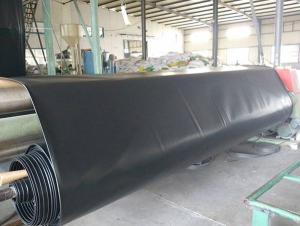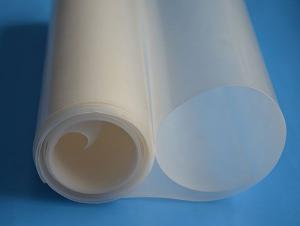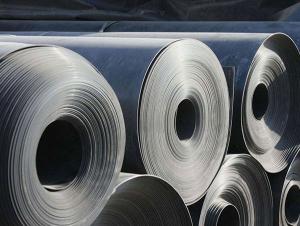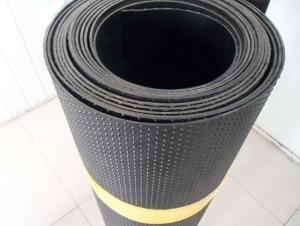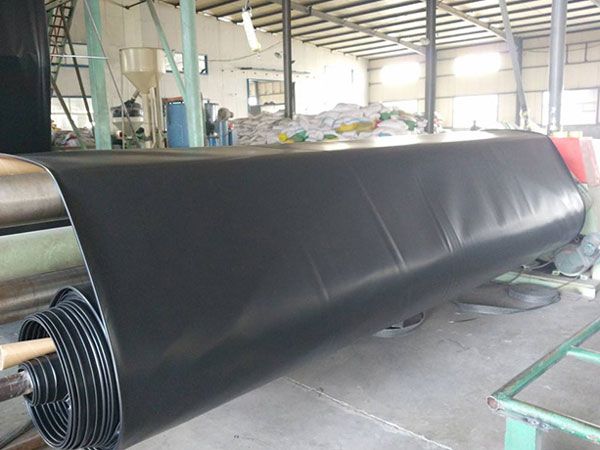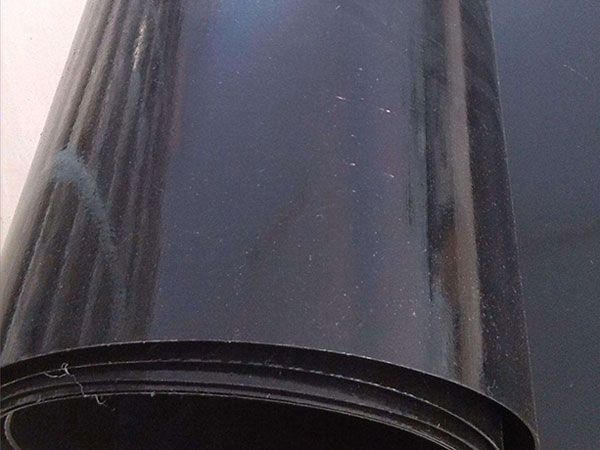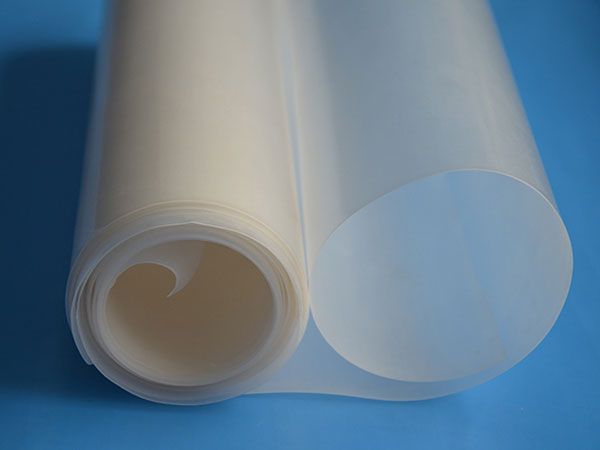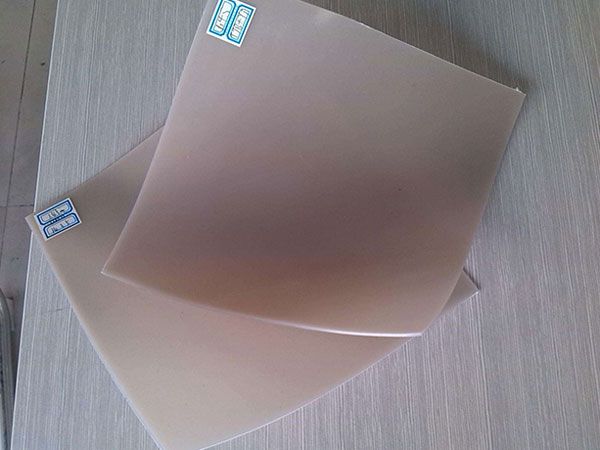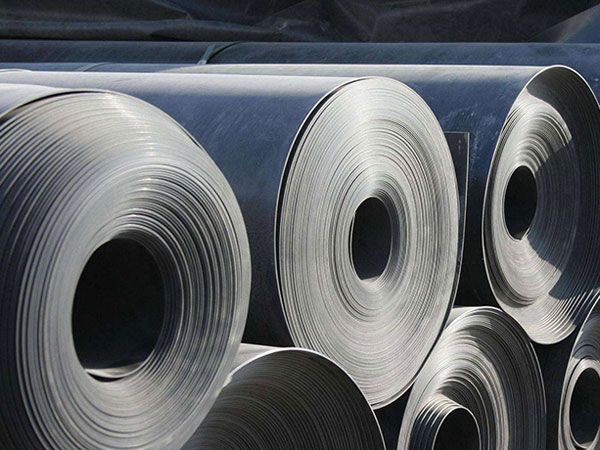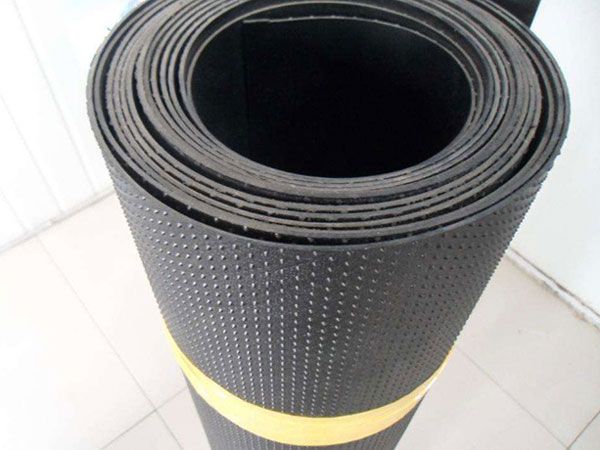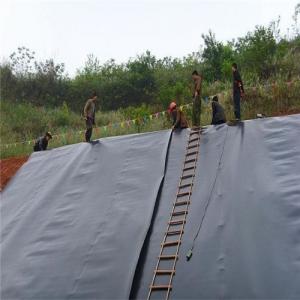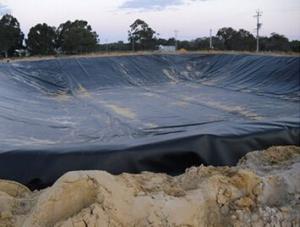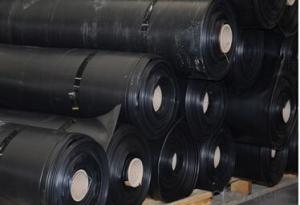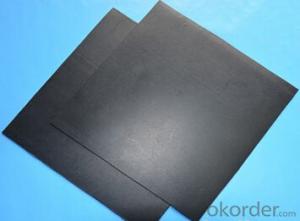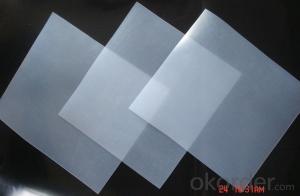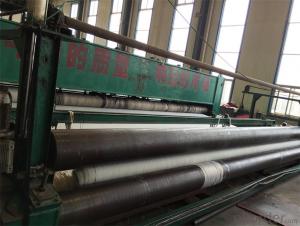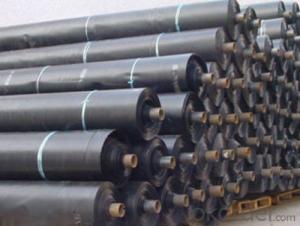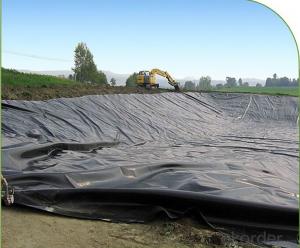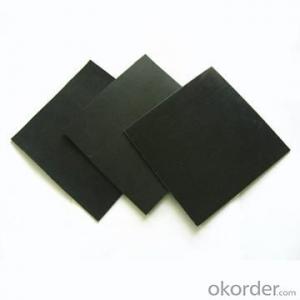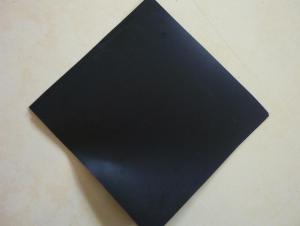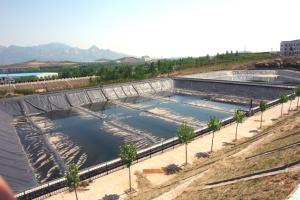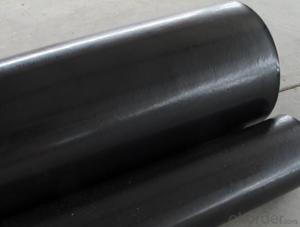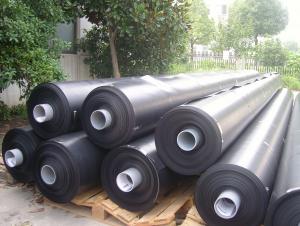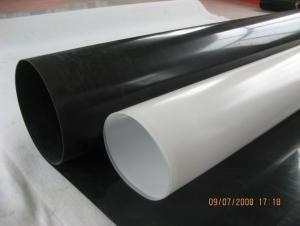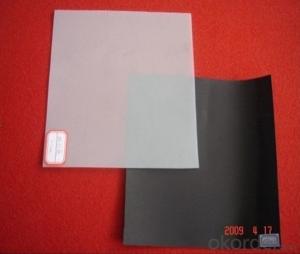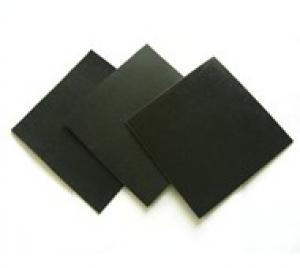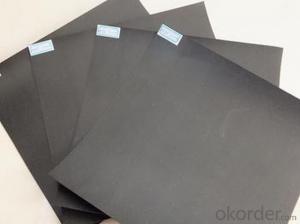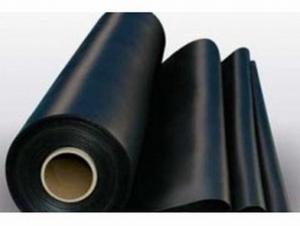Lona De Geomembrana HDPE/LDPE/LLDPE
- Loading Port:
- Guangzhou
- Payment Terms:
- TT or LC
- Min Order Qty:
- 10 m²
- Supply Capability:
- 9999999 m²/month
OKorder Service Pledge
OKorder Financial Service
You Might Also Like
We provide various types of geomembrane products, free samples and the latest product quotation according to your needs. We are a geomembrane supplier from China, and we can provide you with factory prices and various inspection certificates.
What is geomembrane?
Geomembrane takes plastic film as the anti-seepage base material, and is compounded with non-woven fabric. The anti-seepage performance of new material geomembrane mainly depends on the anti-seepage performance of plastic film. Plastic films for anti-seepage applications at home and abroad mainly include polyvinyl chloride (PVC), polyethylene (PE), EVA (ethylene/vinyl acetate copolymer). In tunnel applications, ECB (ethylene vinyl acetate modified asphalt blend geomembrane) is designed and used. They are polymer chemical flexible materials with small proportion, strong extensibility, high adaptability to deformation, corrosion resistance, low temperature resistance and good frost resistance.
Characteristics of geomembrane
The composite geomembrane is made of plastic film as the anti-seepage base material and non-woven fabric. Its anti-seepage performance mainly depends on the anti-seepage performance of the plastic film. Plastic films used for seepage prevention at home and abroad mainly include polyvinyl chloride (PVC), polyethylene (PE), ethylene/vinyl acetate copolymer (EVA), which are polymer chemical flexible materials with small proportion, strong extensibility, high deformation adaptability, corrosion resistance, low temperature resistance and good frost resistance.
The service life of composite geomembrane is mainly determined by whether the plastic film has lost its anti-seepage and water separation function. According to the national standard of the Soviet Union, the polyethylene film with a thickness of 0.2m and stabilizer for hydraulic engineering can work for 40 to 50 years in clean water and 30 to 40 years in sewage. Therefore, the service life of composite geomembrane is sufficient to meet the service life of dam anti-seepage requirements.
Scope of application of geomembrane
Zhoutou reservoir dam was originally a core dam, but due to dam collapse, the upper part of the core wall was disjointed. In order to solve the problem of seepage prevention in the upper part, an anti-seepage inclined wall was added. According to the safety demonstration and analysis of Zhoutou reservoir dam, in order to solve the problem of weak seepage surface and dam foundation leakage caused by multiple landslides of the dam, seepage prevention bodies such as bedrock curtain grouting, contact surface grouting, backfill curtain of grab sleeve well and high-pressure jet grouting seepage prevention board wall are adopted in vertical seepage prevention. The upper inclined wall is covered with composite geomembrane for seepage prevention. The lower part is connected with the vertical cut-off wall and the upper part is 358.0m high.
Performance characteristics of HDPE geomembrane
1. HDPE geomembrane is a flexible waterproof material with high anti-seepage coefficient (1 × 10-17cm/s);
2. HDPE geomembrane has good heat resistance and cold resistance, and its operating environment temperature is 110 ℃ at high temperature and - 70 ℃ at low temperature;
3. HDPE geomembrane has good chemical stability and can resist the corrosion of strong acid, alkali and oil. It is a good anti-corrosion material;
4. HDPE geomembrane has a very high tensile strength, so that it has a very high tensile strength to meet the needs of high standard engineering projects;
5. HDPE geomembrane has strong weather resistance, strong anti-aging performance, and can be used naked for a long time to maintain the original performance;
6. Overall performance of HDPE geomembrane. HDPE geomembrane has strong tensile strength and elongation at break, enabling it to be used under various adverse geological and climatic conditions. Strong strain force to adapt to geological uneven settlement;
7. HDPE geomembrane is made of high-quality original plastic and carbon black particles without any preservatives. HDPE has been used in China to replace PVC as the raw material of food packaging bags and fresh-keeping films.
Application of HDPE geomembrane
1. HDPE geomembrane is applicable to environmental protection and sanitation, such as waste landfill, sewage treatment plant, power plant regulating tank, industrial and hospital solid waste, etc;
2. LDPE anti-seepage membrane is applicable to water conservancy projects, such as anti-seepage, leakage stoppage and reinforcement of river, lake and reservoir dams, anti-seepage of canals, vertical core walls, slope protection, etc;
3. HDPE anti-seepage membrane is used in municipal projects: subway, underground works of buildings, planting roofs, roof gardens, and sewage pipes;
4. Polyethylene anti-seepage membrane is applicable to gardens: artificial lakes, rivers, reservoirs, pool bottom of golf courses, slope protection, green lawn waterproof and moisture-proof;
5. HDPE geomembrane is suitable for petrochemical industry: chemical plants, oil refineries, anti-seepage of oil storage tanks, linings of chemical reaction tanks, sedimentation tanks, secondary linings, etc;
6. Polyethylene geomembrane is suitable for mining industry: the bottom lining of washing pond, heap leaching pond, ash yard, dissolution pond, sedimentation tank, storage yard, tailings is impermeable, etc;
7. Low density polyethylene film is suitable for traffic facilities: road foundation reinforcement, culvert seepage prevention;
8. LDPE anti-seepage membrane is applicable to agriculture: anti-seepage of reservoirs, drinking water pools, impoundments and irrigation systems;
9. HDPE film is suitable for aquaculture industry: intensive and industrialized aquaculture ponds, fish ponds, lining of shrimp ponds, slope protection of sea cucumber circles, etc;
10. High density polyethylene anti-seepage film is applicable to salt industry: salt field crystallization pool, brine pool cover, salt film, salt pool plastic cover.
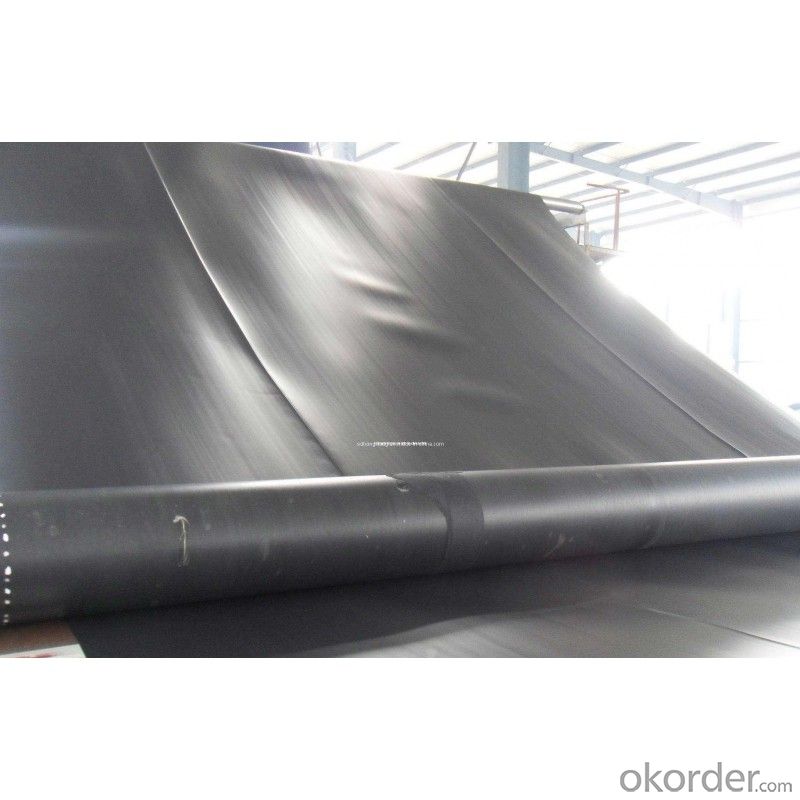
FAQ:
Q1: Can you provide a sample for us?
A:Yes,We can send free samples,but customer need to pay the freight.
Q2: What is your minimum order quantity?
A:The minimum order quantity is 5000 ,but it is negotiable.
Q3:What is your payment terms?
A: T/T,Western Union,Paypal,L/C...
Q4:What is your delivery time?
A:Production time usually costs 2-20 days.
- Q: which is good for the eyes, Matte stick membrane or high permeability stick membrane
- High permeable membrane,compared with the dull polished membrane, is good for the eyes, but it usually also need to pay attention to the eye when using the cell phone, the eyes can not say taht it won't be hurt with no film or paste other kinds of film~
- Q: What is the difference between the unidirectional geogrid and the bidirectional geogrid?
- Unidirectional geogrid is made of a kind of reticulate compound material. To produce it, the raw materials are required to be extruded with punched holes and heated for shaping. It can be divided into two categories according to material, namely the unidirectional polypropylene geogrid and unidirectional polyethylene geogrid. The material is characterized by really high tensile strength and tensile modulus along the stretching direction. It provides ideal interlock system for the soil with low extension rate. At present, it is the most ideal reinforced material. Bidirectional plastic geogrid is fit to reinforce the roadbed, tunnel wall, parking lot, airport, wharf and others that have permanent bases. It can take the place of metal gauze to be used as the top mesh in the mine. At the same time, it can support the plants on the ground and stabilize the afforestation. It can be used on the soil slope to prevent it from water loss and soil erosion. It is time saving, labor saving and is easy to install. It can reduce the maintenance frequency ofpavement, efficiently prevent the road from collapse and crazing, provide it with permanent landscaping and increase the bearing capacity and service life of roadbed.
- Q: Are geomembranes resistant to corrosion?
- Yes, geomembranes are highly resistant to corrosion. They are designed to withstand exposure to various chemicals, acids, and alkaline substances, making them an ideal choice for applications where corrosion resistance is essential, such as in mining, waste management, and environmental protection.
- Q: How do geomembranes contribute to landfill gas collection systems?
- Geomembranes contribute to landfill gas collection systems by acting as a barrier to prevent the escape of harmful gases from the landfill. They are used to line the base and sides of the landfill, creating a sealed environment that allows for the effective collection and containment of landfill gas. This gas, which primarily consists of methane and carbon dioxide, can then be extracted and utilized as a source of energy or safely released into the atmosphere, reducing the environmental and health risks associated with landfill gas emissions.
- Q: What are the techniques of foam concrete?
- With unique foam excitation technique, coal ash and other waste materials are mixed together in a scientific proportion, then they will become gold bricks—high-performance building blocks which can float on water with many advantages of lightweight, environmental protection, energy-saving and thermal insulation after going through many techniques of compulsory stirring, activation, foaming, output, casting molding. Special foaming agent is composed of several chemical raw materials in a certain proportion that are easy to buy. It will become light after foaming which is much more effective than that of most foaming agents sold in the market, but the price of it is 50% lower than that of most foaming agents sold in the market. High efficient curing agent is composed of several chemical raw materials in a certain proportion that are easy to buy, which greatly reduces cement quantity and cost. It has advantages of high strength and light weight, and enables non-autoclaved blocks (bricks) to reach and exceed the required strength of steam-cured blocks; MS innovative forming non-autoclaved blocks new molding technology, moulds can arbitrarily change the size of blocks in order to adapt to fit around the block sizes that walls need, which reduce the cost of moulds, and are convenient.
- Q: Are geomembranes resistant to hydrostatic pressure?
- Yes, geomembranes are designed to be resistant to hydrostatic pressure. They are specifically engineered to provide a barrier against water and other fluids under pressure, making them an effective solution for containment and lining applications.
- Q: How do geomembranes stabilize slopes?
- Geomembranes stabilize slopes by acting as a barrier to prevent soil erosion and water infiltration. They create a stable surface that reduces the risk of landslides by reinforcing the slope and providing increased slope stability. Additionally, geomembranes can also control soil moisture and prevent the loss of fine particles, further enhancing the stability of the slope.
- Q: Which one should be used for dam protection, geomembrane or wire box?
- Wire box, of course. It has good protection effect and can prevent the dam from landslide, water loss and soil erosion.
- Q: How long is the service life of electrothermal?film?
- The service life of electrothermal?film has a certain relationship with the quality itself. Now there are many domestic and Korean electrothermal?film in the market, the general warranty of which is about two years, American electrothermal?film is better. The heating system of electrothermal?film is sealed with special printing ink in the interlayer of macromolecular polyester films which can burn-in under constant high temperature condition. The surface normal working temperature of American electrothermal?film is around 40 degrees which is far below the burn-in temperature, therefore its service life is the same as that of buildings.
- Q: What are the environmental benefits of using geomembranes?
- Using geomembranes can provide several environmental benefits. Firstly, these synthetic liners help prevent contaminants from seeping into the soil and groundwater, thus protecting the quality of local water sources. Additionally, geomembranes serve as a barrier against soil erosion, ensuring the stability of slopes, embankments, and landfills. By preventing erosion, they help preserve natural habitats and prevent the loss of fertile soil. Furthermore, geomembranes can be used to line and cover landfills, reducing the release of harmful gases and pollutants into the atmosphere. Overall, the use of geomembranes plays a crucial role in safeguarding the environment by minimizing pollution, preserving ecosystems, and mitigating the impact of human activities on natural resources.
Send your message to us
Lona De Geomembrana HDPE/LDPE/LLDPE
- Loading Port:
- Guangzhou
- Payment Terms:
- TT or LC
- Min Order Qty:
- 10 m²
- Supply Capability:
- 9999999 m²/month
OKorder Service Pledge
OKorder Financial Service
Similar products
Hot products
Hot Searches
Related keywords
